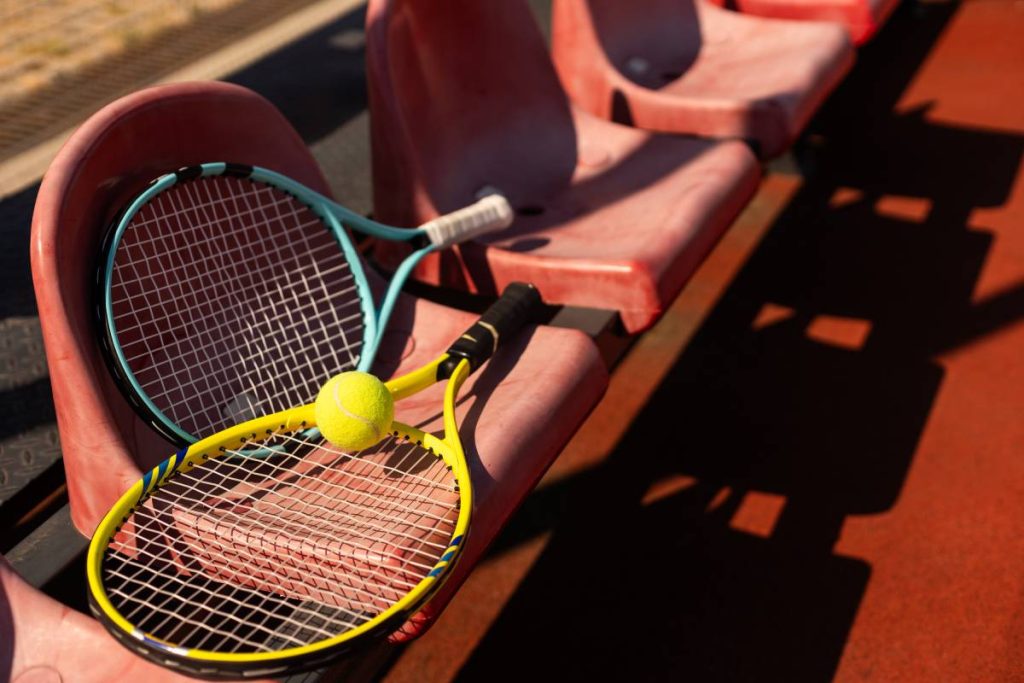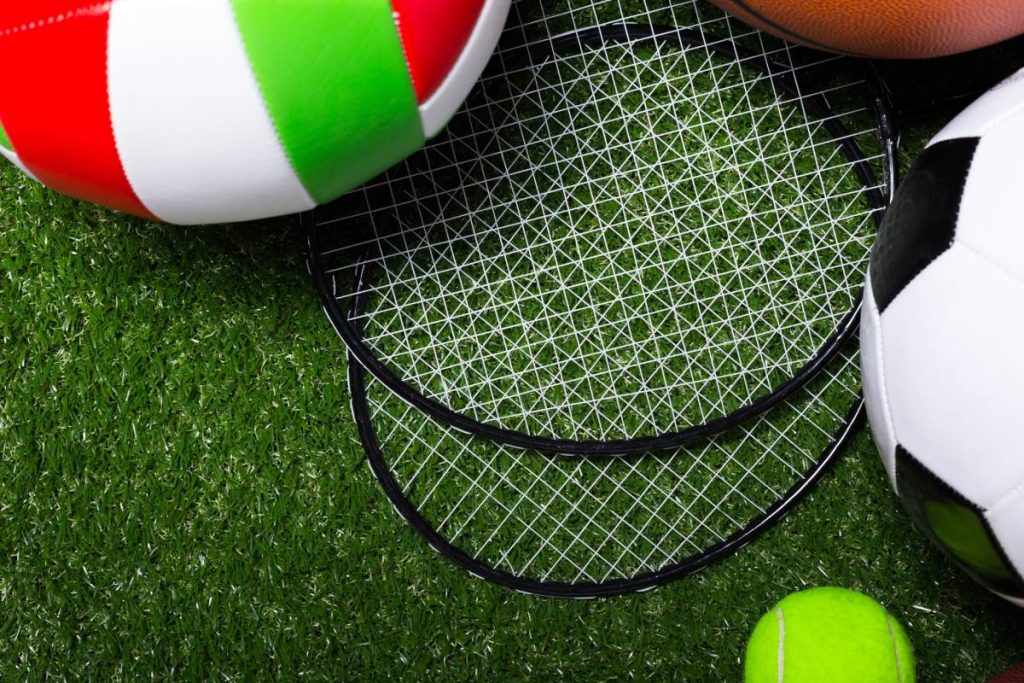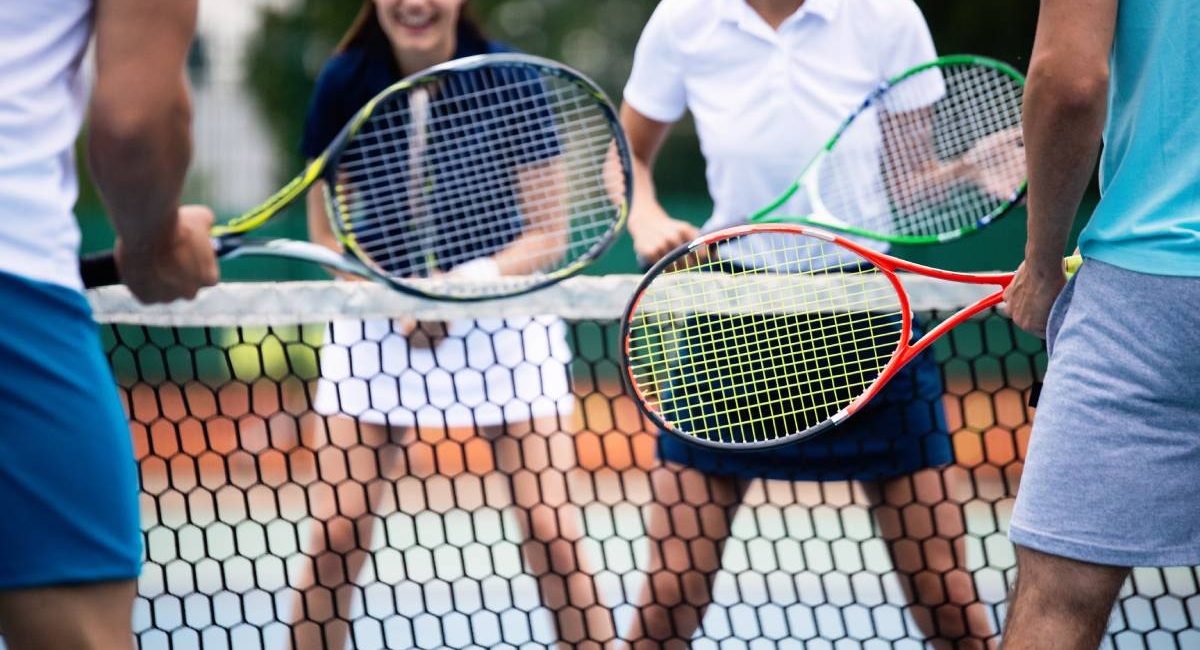Choosing a tennis racket boils down to three key factors: power, control, and manoeuvrability. Players worldwide are always on the hunt for the perfect racket that strikes the right balance between these three elements.
This guide will help you decode the technical specifications of tennis rackets and grasp how they impact power, control, and manoeuvrability, simplifying your decision-making process and adding a fun twist to your racket selection journey.
You might also read
How many types of tennis racquets?
Tennis racquets come in various types, each designed to suit different playing styles and preferences. Let’s break down the main types:
- Power Racquets: These racquets are ideal for players who want extra oomph behind their shots. They typically feature larger heads and a more extended length, providing a larger sweet spot and more power with less effort.
- Control Racquets: Contrary to power racquets, control racquets prioritize precision over power. They usually have smaller heads and a heavier weight distribution, offering better manoeuvrability and control over shots.
- Tweener Racquets: As the name suggests, tweener racquets aim to strike a balance between power and control. They are versatile options suitable for intermediate players looking to enhance both aspects of their game. Tweener racquets often feature a mid-sized head and a moderate weight.
- Game Improvement Racquets: These racquets cater to beginners and recreational players aiming to improve their game. They typically have oversized heads, and lightweight frames, and are designed to be forgiving on off-centre hits, making them easier to handle for less experienced players.
- Pro Staff Racquets: Popularized by professional players, pro staff racquets are favoured by advanced players seeking precision and feel. They often have smaller heads and heavier frames, requiring more skill to wield effectively but offering unparalleled control and feedback.
- Spin Racquets: Spin racquets are designed to help players generate more spin on their shots. They often feature open string patterns, allowing the strings to move more freely and grip the ball better, resulting in enhanced spin potential.
- Comfort Racquets: Comfort racquets prioritize reducing shock and vibrations, making them suitable for players prone to arm or shoulder injuries. They typically incorporate technologies such as dampening systems and softer materials to absorb impact and provide a more comfortable playing experience.
- Junior Racquets: Specifically designed for younger players, junior racquets come in various sizes to accommodate different age groups and skill levels. They are lighter and shorter than adult racquets, making them easier for children to handle and manoeuvre on the court.
- Speciality Racquets: Beyond the main categories, there are speciality racquets tailored to specific needs or playing conditions. This can include racquets designed for players with physical disabilities, eco-friendly racquets made from sustainable materials, or even customizable racquets allowing players to adjust weight, balance, and other parameters to their liking.

Other factors to consider
Head Size
The size of the head of a tennis racket directly affects its power. Bigger heads pack more punch compared to smaller ones, all else being equal. They also offer a larger area to hit the ball and a sweeter spot, which forgives off-center hits. Rackets nowadays come in various head sizes, ranging from 93 to 135 square inches, with the most common falling between 97 and 100 square inches.
Rackets around the 100-square-inch mark strike a good balance between power and control, suiting many players. Typically, smaller head sizes attract skilled players who value control, while larger ones appeal to beginners and intermediates seeking more power and forgiveness.
Length
The standard length for an adult tennis racket is 27 inches, but they’re available in lengths from 26.5 to 29 inches (with 29 inches being the maximum for tournament play). Longer rackets provide extra reach on groundstrokes, more leverage on serves, and slightly more power overall compared to standard length ones, assuming all other factors remain the same. However, the increased length means a higher swing weight, requiring a bit more effort to maneuver the racket. Many power-oriented rackets are designed to be lighter to maintain maneuverability, even at longer lengths.
Weight and Balance
Weight and balance significantly influence how a racket feels in your hand and when you swing it during play.
Weight
Heavier rackets deliver more power, stability, and absorb less shock than lighter ones, assuming all else is equal. The added weight helps the racket assert itself when it strikes the ball, resulting in a solid, stable feel. Rackets with these qualities are often described as having “good plow through.” Players with longer, faster strokes from the baseline can benefit from the depth and pace provided by heavier rackets. Conversely, lighter rackets are more maneuverable, making it easier for players to position them and generate spin due to their faster swing.
On the court, lighter rackets allow players to whip the ball with spin for better angles, lobs, and passing shots, as well as maneuver the racket swiftly during quick exchanges at the net. It’s worth noting that you can always add weight to a racket if it’s too light, but reducing its weight is nearly impossible.
Balance
When it comes to balance, a racket can fall into three categories: head light, head heavy, or even balanced. A head-light racket has more of its weight towards the handle, which helps keep it feeling easy to move, even if it’s on the heavier side. These are common in traditional player’s rackets. On the flip side, lightweight power rackets tend to be head heavy, with more weight towards the head. This setup offers some stability despite the racket’s light overall weight. Then there are medium-weight rackets, which either have an even balance or are close to it. With weight evenly distributed throughout, these rackets strike a balance between stability and maneuverability without feeling too heavy or too light.

Frame Stiffness
Frame stiffness, measured by a rating called RA, directly affects a racket’s power potential. Here’s a breakdown of RA ratings:
- Flexible frame: 63 and below
- Medium stiffness: 64 to 67
- Stiff frame: 68 and above
Stiffer rackets bend less during ball contact, resulting in less energy loss and more power. On the other hand, flexible rackets bend more, absorbing more energy and potentially offering less power. Contrary to a common myth, flexible rackets don’t “return” energy to the ball due to a supposed catapult effect. Instead, they absorb energy, which can affect power, control, and comfort.
While stiffer rackets typically offer more power, they may sacrifice some control and comfort. Advanced players with fast swings may prefer the feel and control of a flexible racket, while beginners or intermediates might opt for a stiffer racket for a balance of power and control. Combining a powerful racket with a stiff, control-oriented string is popular among elite players for maximizing power and spin. However, this setup can lead to comfort issues for amateur players.
Generally, stiffer rackets transmit more impact shock to the wrist, elbow, and shoulder, making them less comfortable, especially for players with arm or shoulder problems. Comfort is subjective, but players with such issues should consider rackets with an RA rating of 66 or less for a more comfortable playing experience.
Swingweight
Swingweight measures how heavy a racket feels during a swing. Rackets with higher swing weights are tougher to swing but offer more comfort, power, and stability upon impact. Conversely, those with lower swing weights are easier to swing but may lack stability and comfort, especially against faster-paced opponents.
Advanced players prefer higher swing weights as they aid in redirecting fast-paced shots and allow for powerful strokes. On the other hand, beginners and intermediate players favour lower swing weights for easier acceleration, enabling effective racket positioning and faster stroke speeds for pace and spin.
- Low swing weight: 305 and below (Easy to manoeuvre, suitable for beginners)
- Medium swing weight: 310 to 325 (Moderate manoeuvrability and stability, suitable for all skill levels but ideal for intermediates)
- High swing weight: 325 and above (Very stable, suitable for advanced players)
String Pattern
The string pattern of a racket, often overlooked by recreational players, significantly influences its performance and feel. String patterns are classified as open or closed.
An open string pattern allows for more deflection upon impact, resulting in greater ball rebound and a higher launch angle. This livelier feel offers easier depth and pace, with potential for increased spin due to greater string movement. However, it may lead to faster string wear and breakage.
Conversely, a closed string pattern deflects less upon impact, providing a more controlled feel. While it limits string movement for spin generation, the tighter spacing offers better durability, allowing for the use of softer, thinner strings without sacrificing longevity.

Does a good tennis racquet make a difference?
Absolutely, the quality of your tennis racket can make a significant difference in your game. Here’s why in simple terms:
- Performance Enhancement: A good tennis racket is like having a reliable partner on the court. It can enhance your performance by providing better control, power, and feel. Rackets with advanced technologies and materials can help you hit more accurate shots with less effort, giving you an edge over your opponent.
- Comfort and Confidence: A well-made racket feels comfortable in your hand and absorbs shock effectively. This means less strain on your arm and shoulder, reducing the risk of injuries and allowing you to play with confidence and consistency.
- Customization Options: High-quality rackets often offer customization options such as adjustable weights and string tension. This allows you to fine-tune the racket to your specific playing style and preferences, optimizing your performance on the court.
- Durability: Quality rackets are built to last. They can withstand the rigors of intense gameplay and frequent use without losing their performance characteristics. Investing in a durable racket means you won’t have to replace it as often, saving you money in the long run.
- Technology and Innovation: Leading racket manufacturers invest heavily in research and development to incorporate the latest technology and innovation into their products. This results in rackets that are more aerodynamic, stable, and responsive, giving you a competitive advantage on the court.
- Feedback and Feel: A good racket provides valuable feedback and feel, allowing you to better understand your strokes and make adjustments as needed. This sensory input helps you develop your skills and improve your game over time.
- Psychological Boost: Using a high-quality racket can also provide a psychological boost. Knowing that you have the best equipment available can increase your confidence and motivation, leading to better performance on the court.
- Adaptability to Playing Conditions: Different rackets are designed for different playing conditions. For example, some rackets are better suited for clay courts, while others perform well on hard courts. Having the right racket for the playing surface can make a big difference in your overall game.
Yes, a good tennis racket does make a difference. It can enhance your performance, provide comfort and confidence, offer customization options, last longer, incorporate advanced technology, improve feedback and feel, boost your psychological mindset, and adapt to various playing conditions. Investing in a high-quality racket is an investment in your game and can help you reach your full potential as a tennis player.
Are you ready to dive into the exciting world of tennis?
Now that everything’s clear, it’s your turn to take the next step. Whether you’re aiming to become a champion or simply enjoy the game, choosing the right racket is key. Remember, learning tennis is a gradual process, and above all, it’s important to have fun. Select a racket that matches your skill level and your goals. Be honest with yourself – picking the right racket will make improving your tennis skills much easier.

